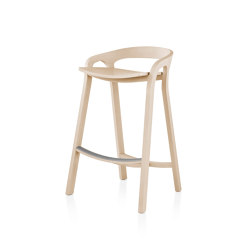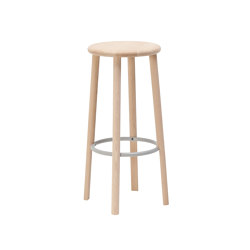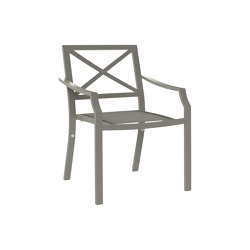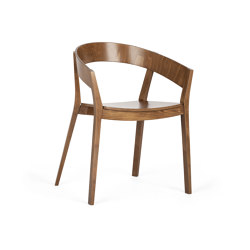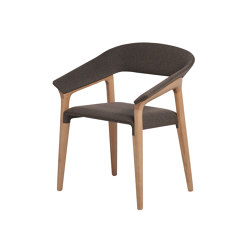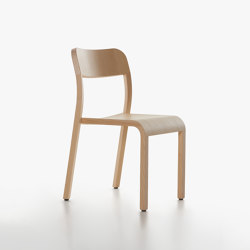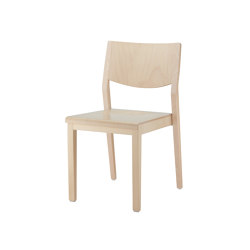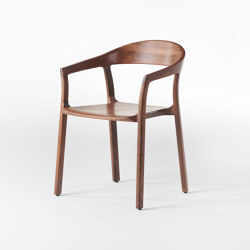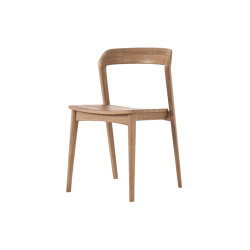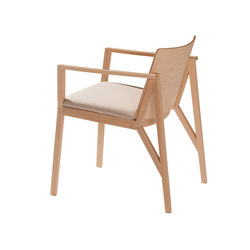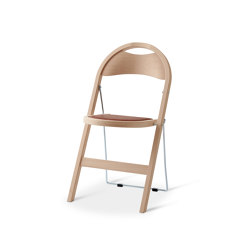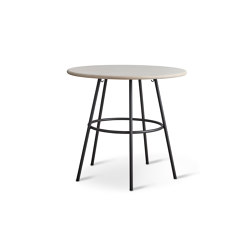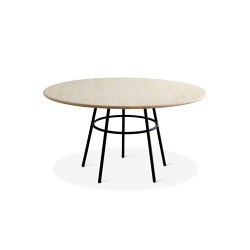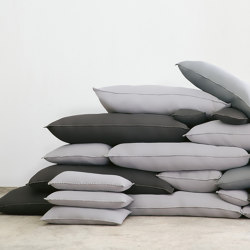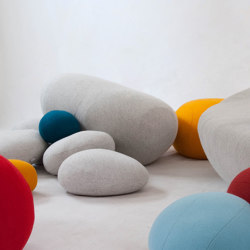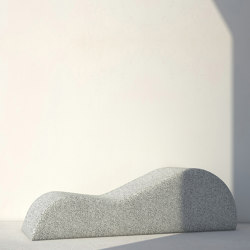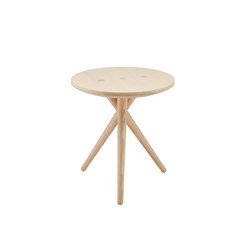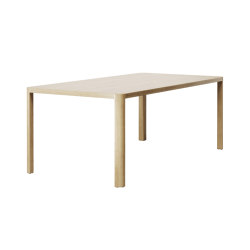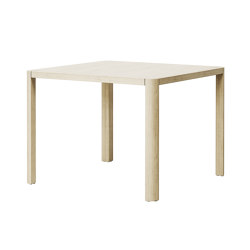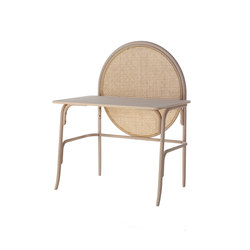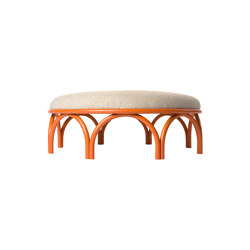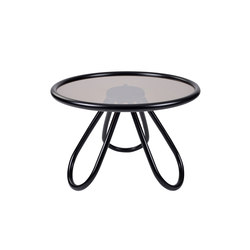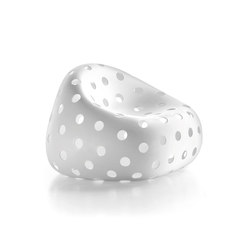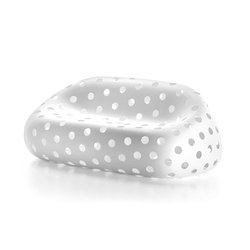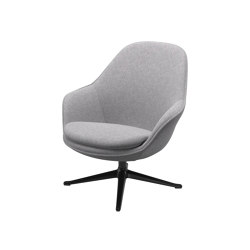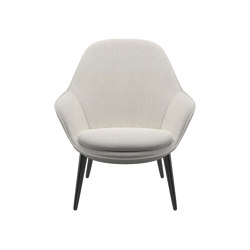She Said Lowide | MC1
Armchairs from Mattiazzi, Designed by Studio Nitzan Cohen
Product description
Lounge in ash wood frame available in 4 finishes: natural, black, white, neon blue.
W: 70 cm x D: 55 cm x H: 71 cm, SH: 40 cm.
W: 70 cm x D: 55 cm x H: 71 cm, SH: 40 cm.
Concept
I find several points of interest in your project for Mattiazzi.
The masculine—feminine variation between HE SAID and SHE SAID reminds me of Mickey and Minnie Mouse. Aside from their clothing, the differences between them are subtle —Mickey’s nose is slightly bigger and Minnie has eyelashes— HE SAID has protruding, aggressive armrests, while SHE SAID’s curve down gently.
It’s strange that chairs haven’t always had masculine and feminine variations, when so many products do. In Freudian analysis, knifes are male and spoons are female. The best sets of cutlery have great tension between the knife and spoon and I can see a similar tension between HE SAID and SHE SAID.
Distinguishing chairs in this way reimagines their role, introduces a new dynamic between chairs, and a new form of product development for them. Expanding a product’s range by varying its size and function is an approach common in the tableware industry. Your collection has the continuity of a family of plates and bowls. The proportional adjustments between SHE SAID and SHE SAID lowIDE are nicely done, there is a clear and natural relationship between them. Titling furniture with a phrase is refreshing! It reminds me of something Eames said regarding Saarinen; that he was a concept man and that the name “womb”, was outside the vocabulary of a decorator. I’m sure that in the 1940s calling his chair “womb” was a radical thing to do.
I think it’s important that we renew the kinds of names we give to furniture and HE SAID / SHE SAID is doing just that. The top half of HE SAID / SHE SAID reveals the sophistication of Mattiazzi’s manufacturing technologies.
The smooth geometry that joins the backrest, armrests and legs is the formal language of injection—molded plastic, and it’s surprising to see in wood. I gather that using a six—axis CNC machine to carve wood is essentially the reverse process of excavating an aluminum mould for a plastic chair. So industrial wood is not an oxymoron. The level of handcraft in the joints that run along these contoured surfaces is also impressive. When it came to the legs and seat you kept the manufacturing simple, using straight stock and bent planes. This mixture of high and low—tech processes gives the collection a strong identity. These pieces are ambitious, push their production technology, update nomenclature, and restructure our concept of how a family of chairs is composed.
You’ve brought some liberated and radical notions to furniture, and managed to make some solid products.
The masculine—feminine variation between HE SAID and SHE SAID reminds me of Mickey and Minnie Mouse. Aside from their clothing, the differences between them are subtle —Mickey’s nose is slightly bigger and Minnie has eyelashes— HE SAID has protruding, aggressive armrests, while SHE SAID’s curve down gently.
It’s strange that chairs haven’t always had masculine and feminine variations, when so many products do. In Freudian analysis, knifes are male and spoons are female. The best sets of cutlery have great tension between the knife and spoon and I can see a similar tension between HE SAID and SHE SAID.
Distinguishing chairs in this way reimagines their role, introduces a new dynamic between chairs, and a new form of product development for them. Expanding a product’s range by varying its size and function is an approach common in the tableware industry. Your collection has the continuity of a family of plates and bowls. The proportional adjustments between SHE SAID and SHE SAID lowIDE are nicely done, there is a clear and natural relationship between them. Titling furniture with a phrase is refreshing! It reminds me of something Eames said regarding Saarinen; that he was a concept man and that the name “womb”, was outside the vocabulary of a decorator. I’m sure that in the 1940s calling his chair “womb” was a radical thing to do.
I think it’s important that we renew the kinds of names we give to furniture and HE SAID / SHE SAID is doing just that. The top half of HE SAID / SHE SAID reveals the sophistication of Mattiazzi’s manufacturing technologies.
The smooth geometry that joins the backrest, armrests and legs is the formal language of injection—molded plastic, and it’s surprising to see in wood. I gather that using a six—axis CNC machine to carve wood is essentially the reverse process of excavating an aluminum mould for a plastic chair. So industrial wood is not an oxymoron. The level of handcraft in the joints that run along these contoured surfaces is also impressive. When it came to the legs and seat you kept the manufacturing simple, using straight stock and bent planes. This mixture of high and low—tech processes gives the collection a strong identity. These pieces are ambitious, push their production technology, update nomenclature, and restructure our concept of how a family of chairs is composed.
You’ve brought some liberated and radical notions to furniture, and managed to make some solid products.
More about this product
Categorised in Seating - Armchairs - stackable - with armrests - 4-leg base - open base - Seat unpadded - Residential - Contract - Hospitality - Wood - Seat solid wood - Base solid wood - Ash.
Part of the collection
LOUNGES & BENCHES.
Manufacturer
Mattiazzi
Family
He Said - She Said | MC1
Architonic ID
1366864
Year of Launch
2009
Similar products
This product has been archived. Product information may no longer be up to date.
Similar products
Where to buy this product
Where to buy this product
